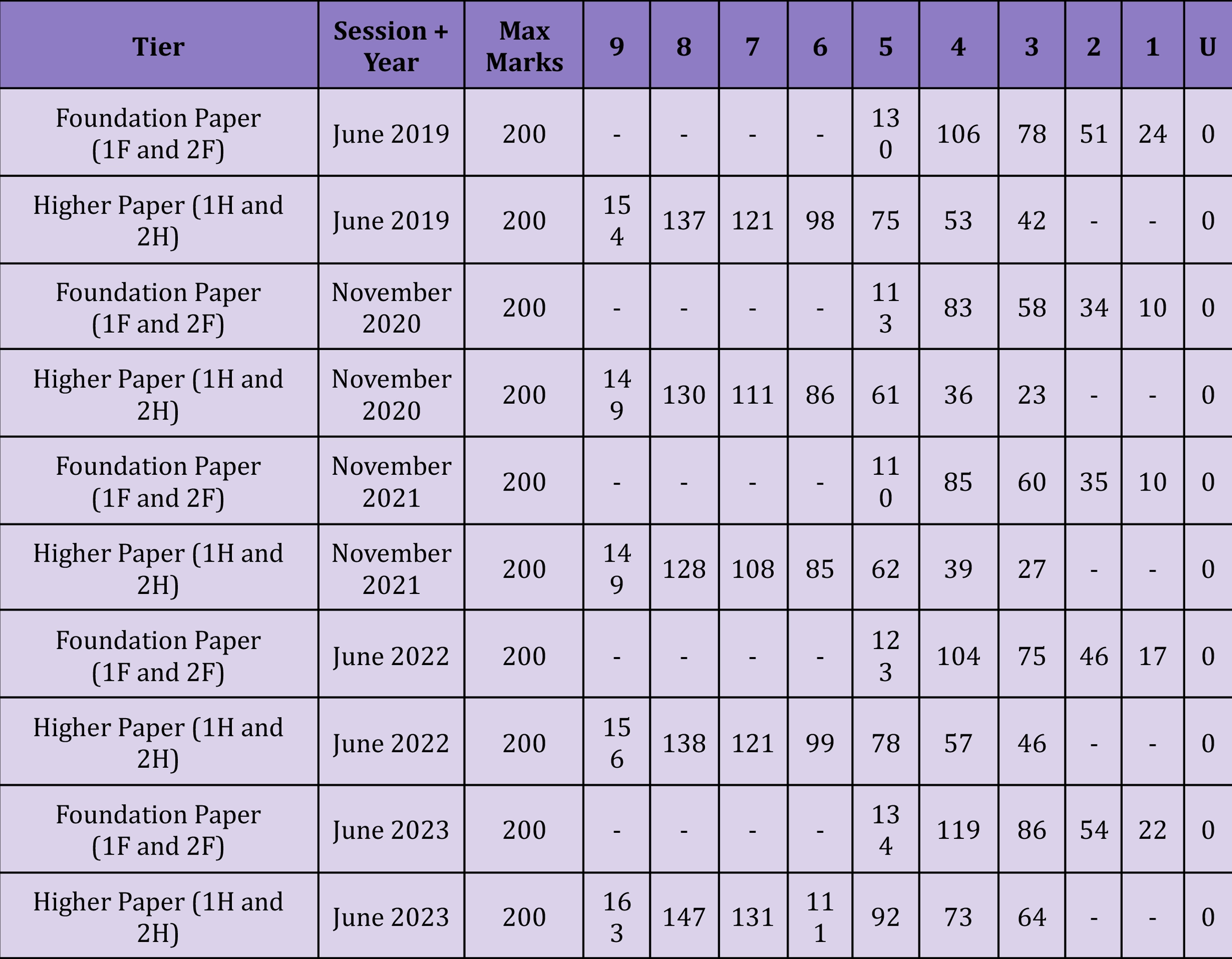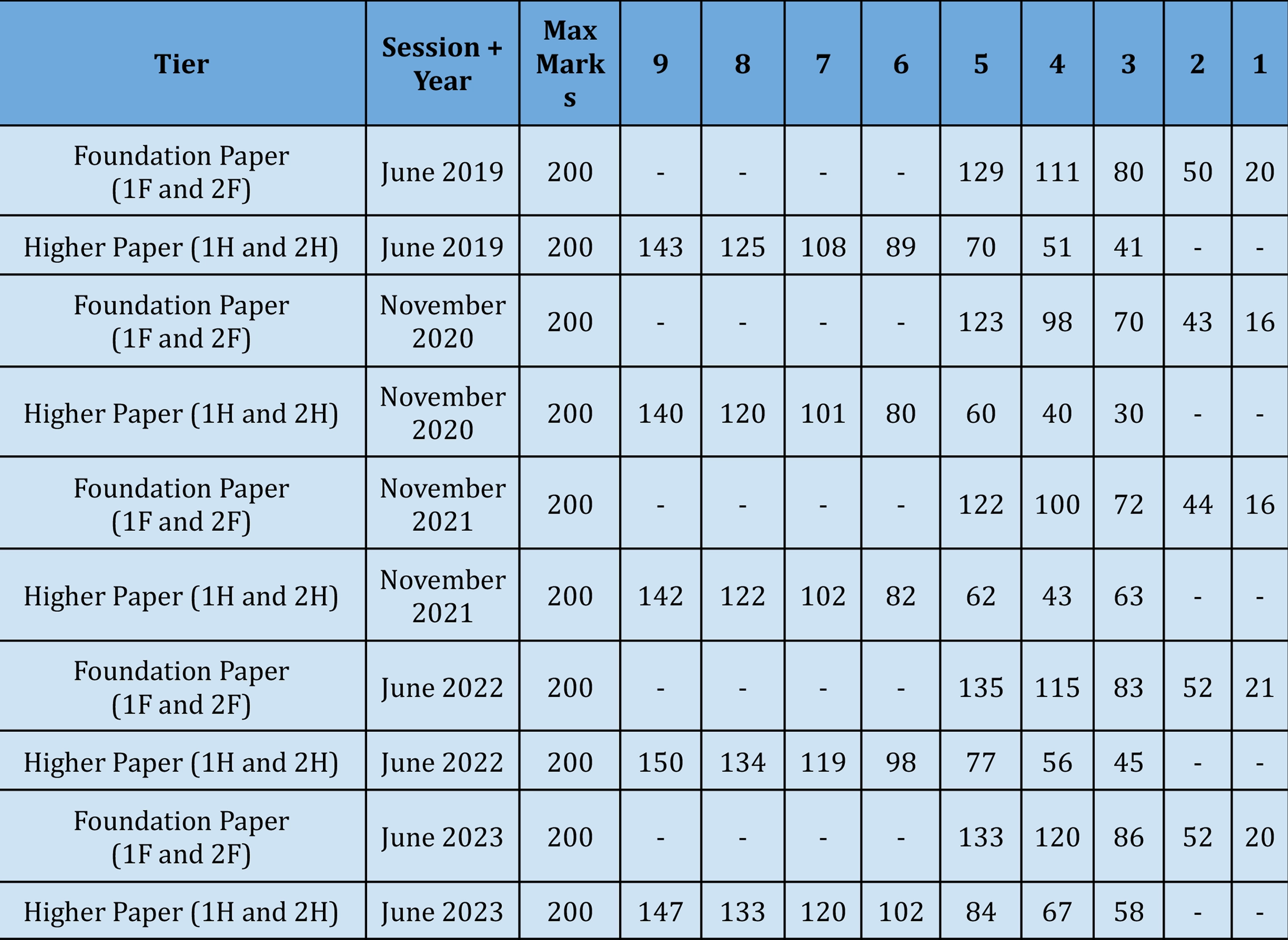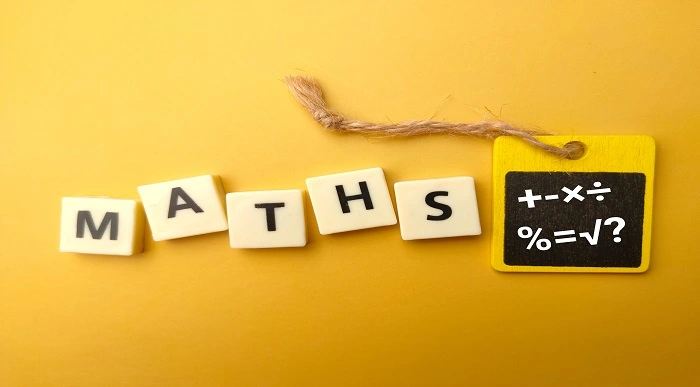GCSE
GCSE Physics Grade Boundaries For All Boards – PDF Download
If you are a GCSE examinee and looking for the Physics GCSE grade boundaries, you have just landed on the right page!
Given that the grade boundaries are subject-specific, it is worth noting that they may shift slightly on a yearly basis. As a result, it is essential to have a thorough understanding of the GCSE grade boundaries in order to establish a target score.
Learn more about the GCSE Physics grade boundaries of the boards like Edexcel, AQA, OCR from this blog.
Table of Content
When are the GCSE Grade Boundaries released?
The GCSE grade boundaries are typically released on the result day. Previously, it happened to be released prior to the result day much like A Levels. But, this system was changed to reduce the stress amongst the students who try to predict their grades.
Grade boundaries of GCSE are modified every year according to the difficulty of the paper and after it has been taken and marked. Once all the papers are marked, the awarding committee consisting of senior examiners carry out the whole process. If a large percentage of students achieve high marks in the exam, the threshold needed to achieve any grade is likely to be higher. It is the other way round if a large number of students achieve lower marks.
 Are you interested in GCSE courses?
Are you interested in GCSE courses?
Know more about the GCSE grade boundaries from the following YouTube video.
Types of GCSE Physics Boundaries:
The GCSE Physics consists of two papers: Foundation paper (1F and 2 F) and Higher paper (1H and 2 H). So, the grade boundaries are set accordingly. For example, if you are taking the Physics Foundation tier, you need to score 130 to obtain a grade 5. If you opt for the Higher tier, you can achieve the same grade by scoring 75 only.
GCSE Physics Grade Boundaries:
This section of the blog provides you with the Physics grade boundaries 2019-2022 of the major boards.
Edexcel GCSE Physics Grade Boundaries:
When it comes to Edexcel GCSE Physics, understanding the grade boundaries is essential for students who are looking to achieve the best possible results. These grade boundaries provide a clear indication of the minimum marks that students need in order to achieve each grade, from 9 to 1.
Edexcel GCSE Physics Grade Boundaries 2019-2023:
AQA GCSE Physics Grade Boundaries
OCR GCSE Physics Grade Boundaries:
By understanding these OCR GCSE Physics Grade Boundaries, students can set clear goals for themselves and work towards achieving the grade they desire. It’s important to note that these grade boundaries can vary from year to year, so students should always check the most up-to-date information to ensure they are working towards the correct targets.
OCR GCSE Physics Grade Boundaries 2019-2022:
How to calculate GCSE grade from grade boundaries?
The GCSE is a ‘linear qualification’ which means all the assessment takes place at the end of the course. Linear qualifications consist of a number of separate exams or non-exam assessment (coursework) called ‘components’. These components are added together to calculate the total mark.
The total mark is then checked against the qualification grade boundaries to get the qualification grade. Look at the example below to understand how to calculate the GCSE grade-
1. Component 1 Mark-36
2. Component 2 Mark-40
3. Component 3 Mark- 47
Total Marks = 123
Now, compare the total mark with the grade boundary.
| Grade | 9 | 8 | 7 | 6 | 5 | 4 | 3 | 2 | 1 |
| Mark | 171 | 161 | 152 | 137 | 122 | 107 | 81 | 55 | 29 |
Since the total mark obtained is 123, the grade is 5.
FAQs:
What are the grade boundaries for GCSE Physics?
The grade boundaries of GCSE Physics varies from board to board. In order to have a clear understanding of the grade boundaries, read the section “GCSE Physics Grade Boundaries.”
What percentage is a grade 9 in GCSE Physics?
The grade boundaries vary annually from board to board, so it is not possible to fix any percentage. However, AQA awards grade 9 to students scoring 70%, whereas Edexcel awards 9 to those achieving 75% in GCSE Physics.
What is a 7 in GCSE?
A 7 in GCSE is considered to be the grade A of the previous grading system.
Is a Grade 8 an A*?
The current grading system considers grade 8 equivalent to the previous A*.
Is Physics GCSE easy?
The GCSE physics is often a nightmare to students for its mathematical equations. You need to know each and every formula and how to apply them. Students who work hard with dedication can only achieve a good grade.
Conclusion
Once you have read this blog, you can easily figure out the Physics GCSE grade boundaries. While you practise your past papers, calculate your score and compare it with the grade boundaries mentioned above. In this way you can guess your grade and performance.
What to Read Next:
- How to Revise for GCSE: Best Ways to Revise for GCSE (Step by Step Guide)
- How To Get Maths GCSE Quickly
- AQA GCSE Exam Timetable 2023 & Key Information
- GCSE Maths Grade Boundaries for All Boards – [2019 to 2023]
- Edexcel GCSE Maths Specification – A Comprehensive Guide
- GCSE Grade Boundaries – All Boards 2022-2023
- What Happens if You Miss a GCSE Exam?


 Are you interested in GCSE courses?
Are you interested in GCSE courses? 







